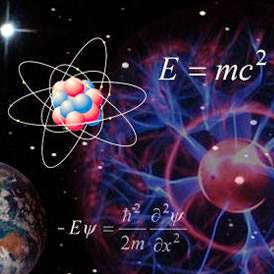 |
| Image Credit: Huffington Post |
Similar to "Flat Earth Society" conspiracy theorists (they ironically have a web site and a Facebook "info" page, go figure), I hear a lot of "young Earth" enthusiasts that confuse, or blatantly obfuscate the distinct differences between Carbon 14 dating and Radiometric dating. Both are related to the decay of isotopes over time as measured by the half lives of the materials read to date it. However, the difference is where the elements are found, how they occur in nature, and what they tell us. This short primer hopefully, clears up any misconceptions and clarifies the inaccuracy of holding onto the notion - sometime propagated by our elected officials - of an Earth only a few thousand years old. Or, for that matter after the Mercury, Gemini, Apollo, Skylab, Space Shuttle and International Space Station is flat or an oblong Frisbee-like disk (though it's not "round," it's not a flying saucer).
Carbon 14 dating
Essentially called so because it involves us "carbon-based life forms," to use a Trek techno-babble phrase. It has a limit of around 50,000 years and uses things like wood, bone, cloth, hair, plant fibers. (1) Page 2 of the "How Stuff Works" link has an excellent graphic on the natural manufacture of the phenomena. Cosmic rays collide with energetic neutrons creating Nitrogen-14, eventually turning into Carbon-14 that is absorbed by plants, that are then consumed/used by animals or humans. Following death and burial as the link implies, word and bones change from Carbon-14 to Nitrogen-14 by Beta particle decay. The key to understanding this is Carbon-12 is considered a stable, i.e. non-decaying isotope, whereas Carbon-14 is unstable. (2) C-14 decays over time, and tells us how long ago an organism died and stopped producing it. This rate, or knowledge of how long this process should take, is how scientists date something using this method. However, it is not without some controversy as decay rates may have been accelerated, or at least different in the distant past. More info at "The Straight Dope" link below, discussing some assumptions in the process and thereby limits to the accuracy. (3) However, the key to this method is what's measured originates from living things.
Radiometric dating
This is on the order of larger and longer time scales, billions of years, starting with the destruction of a distant star by supernova, which gave us the elements in our own bodies ("We are made of 'star stuff' - Carl Sagan) as well as what I'm about to discuss next. The death of distant stars gave us for better or worse: uranium, as such a heavy metal has to be manufactured in an atomic fusion process. (4) Some of that expended material finds its way to forming accretion disks, proto-solar systems of dust and rock that attract one another. The center will eventually become hot enough to become a sun itself and the outer, less thermally energized rings will coalesce into eventual planets. The Earth was initially in a molten state; uranium, silicon and zirconium form ZrSiO4 (Zircon). A faux diamond popularly sold is based on Zirconium (non-radioactive, I might add to alleviate any worries). Once locked into the lead-free crystal, 238U can decay in a similar fashion to C-14 dating, with a half-life of 4.46 x 109 years. The decay eventually leads to 210Pb (Lead). Moon rocks brought back from the Apollo missions are even older, and used as a comparison to the oldest rocks found on Earth, thus 4.54 billion years is the usual time scale given for the age of the globe, give-or-take a few million years (4). Geologic time is admittedly an approximation, and not as precise as any notion of "exactness" (5), but it is the best estimate of how old the planet is that's reported. Dr. Roger C. Wiens gives a primer on radiometric dating "from a Christian Perspective," his concern stated here:
Radiometric dating--the process of determining the age of rocks from the decay of their radioactive elements--has been in widespread use for over half a century. There are over forty such techniques, each using a different radioactive element or a different way of measuring them. It has become increasingly clear that these radiometric dating techniques agree with each other and as a whole, present a coherent picture in which the Earth was created a very long time ago. Further evidence comes from the complete agreement between radiometric dates and other dating methods such as counting tree rings or glacier ice core layers. Many Christians have been led to distrust radiometric dating and are completely unaware of the great number of laboratory measurements that have shown these methods to be consistent. Many are also unaware that Bible-believing Christians are among those actively involved in radiometric dating. (6)
That is an admittance that may disturb some on both sides of a politically contrived "debate." However, this Tweet from Bill Nye (a bit off-color, I will admit), says the point succinctly in less than 140 characters:
Adherence to the Scientific Method produces tangible, often profitable results - for the theist or skeptic alike - and it doesn't discriminate.
Sources:


No comments:
Post a Comment